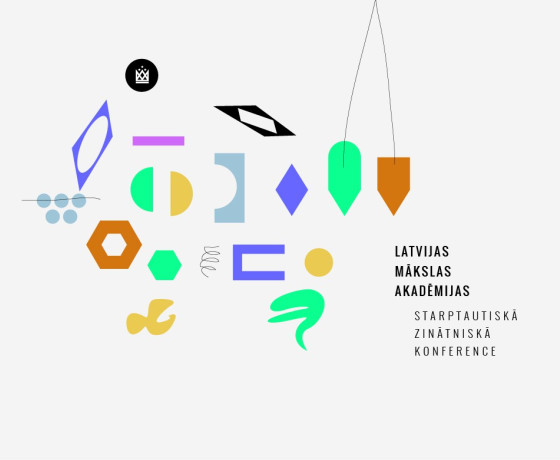IN-DEPTH REVIEW OF THE CONFERENCE PROCEEDINGS OF THE DOCTORAL STUDY PROGRAM AT THE ART ACADEMY OF LATVIA (2022) / DR. GEORGE SIAROV
The 2022 Conference Proceedings from the Doctoral Study Program at the Art Academy of Latvia, masterfully edited by Prof. Ojārs Spārītis, Dr. habil. art and Agita Gritāne, PhD stand as a monumental testament to the synergy between humanities and natural sciences. Under the conference theme "Synergy Between Humanities and Natural Sciences in Cultural History and Theory," these proceedings bring forth a rich tapestry of research and innovation.
With contributions from over 50 distinguished lecturers across nine countries, the volume showcases a kaleidoscope of perspectives, methodologies, and groundbreaking ideas. Each article in the proceedings represents a unique blend of academic rigor and creative exploration, underscoring the doctoral program's commitment to pushing the boundaries of knowledge.
The keynote articles set the tone for the conference, with Thomas Da Costa Kaufmann and Jekaterina Erenpreisa offering profound insights into the complex interrelations between art, science, and society. Their discussions illuminated how the integration of scientific methodologies can enrich humanities research, paving the way for a new era of interdisciplinary scholarship.
The articles span a wide array of subjects, from intricate historical analyses to explorations of contemporary issues, demonstrating a blend of scholarly rigor and innovative thinking. This innovative fusion is a testament to the doctoral program's dedication to nurturing intellectual curiosity and academic excellence.
After reviewing the Conference Proceedings, several innovative ideas and themes emerge, showcasing the synergy between science and art. Many articles explore the intersection of these fields, emphasizing interdisciplinary methodologies that blend creative and analytical processes. A significant focus is on using modern technology, like advanced imaging techniques, for analyzing and preserving artworks, which highlights a fusion of art history with scientific innovation. Some pieces delve into the impact of environmental and ecological factors on art, opening a rich exploration area at the intersection of environmental science and artistic creation. Additionally, there's an approach to historical and cultural phenomena through scientific methodologies, offering fresh perspectives on traditional humanities topics. Finally, discussions around contemporary art incorporate or draw inspiration from scientific concepts, reflecting the evolving nature of art in the context of modern scientific understanding. These examples represent just a fraction of the rich content available in the proceedings. Each article contributes to the overarching theme of the conference, showcasing the dynamic interplay between science and art and highlighting the Art Academy of Latvia's doctoral program's strength in fostering innovative, interdisciplinary research.
In conclusion, the Conference Proceedings from the Art Academy of Latvia's Doctoral Study Program epitomize the dynamism and vitality of modern academic research. The array of topics covered, from technological innovations in art analysis to sociological perspectives on cultural trends, underscores the program's prowess in cultivating a rich, interdisciplinary academic environment. The proceedings not only reflect the program's commitment to excellence but also its role in driving forward the boundaries of knowledge in both the humanities and natural sciences. For scholars, students, and practitioners alike, this volume stands as an invaluable resource, offering inspiration and a foundation for future explorations in the interconnected worlds of art and science.
Dr. George Siarov
Research Council,
SGEM WORLD SCIENCE (SWS) Scholarly Society Vienna


